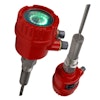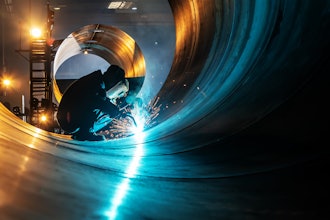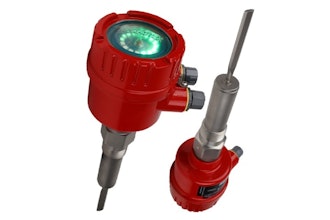According to the Occupational Safety and Health Administration (OSHA), the manufacturing industry had the highest proportion of accidents in 2015 — accounting for 57 percent of all amputations and 26 percent of all hospitalizations reported industry-wide. Of the 12 million people employed in manufacturing sector in the U.S., nearly 400,000 non-fatal injuries are reported annually, along with more than 350 work-related fatalities — per the Bureau of Labor Statistics.
Occupational health and safety is critical for manufacturing as dangers can lurk in every area of the plant. Employees work in and around heavy machinery, conveyor belts, chemicals and combustible liquids and spray booths, and plants are often loud, chaotic and fast-paced, with many moving parts. But there’s another growing challenge that is just as threatening to the health and safety of the manufacturing organization — data.
Today manufacturers are in a deluge of data. Traditional means of extracting data from machines and communication on the plant floor can no longer keep pace with the volume and velocity of information that must be aggregated, analyzed and surfaced to provide appropriate guidance to the human stewards of the shop floor.
As the industrial Internet of Things continues to gain steam, everything in and around the shop floor is broadcasting. Rather than support humans in important work, this well-intentioned but flawed volume of alerts threatens to overwhelm human sensory and information processing capacity as alarm fatigue sets in.
The result is that humans can’t do their work effectively. They may turn the alarms off (or tune them out). As a result, critical events may be missed and operations compromised. Ironically, as manufacturers realize the criticality of harnessing data in the manufacturing environment, they are also realizing the need to address the resulting data deluge, discord and distraction. There needs to be a sharing of data, but only data that is vital and when circumstances warrant that sharing. That data must be shared with the right individuals in the organization to promote clarity, ownership, accountability, interaction and increased productivity of both machines and people — along with workplace health and safety.
This is where next-gen messaging and collaboration tools together with enterprise wearables are coming to the rescue. Data can now be harvested across machines and personnel, and algorithms, rules and analysis applied to formulate insights and prescriptive actions delivered to an Apple Watch, for example. Wearables enable employees to remain connected while also staying hands-free — critical in the manufacturing environment.
This new paradigm promises to not only enable manufacturers to be more efficient, but also usher in a new era of improved safety on the job. Here are 5 ways data delivered to an enterprise wearable can support health and safety initiatives on the shop floor:
No. 1 - Enforcement of protocols. Many incident investigations reveal accidents happen when workers fail to follow procedures or are not made aware of their surroundings. While training and coaching plays a role in this effort, enterprise wearables can present specific directions to workers in real-time and in context with execution and require validation that specific procedures are being followed. This can go a long way in ensuring they don’t lose focus and diverge from operating protocols, putting human safety and businesses at risk.
No. 2 - Validation/confirmation of safe operating conditions. Personnel working around machinery must be safeguarded from risk of injury. In an environment with many moving parts and electrical hazards, lockout/tagout procedures to confirm power has been completely disconnected and cannot be turned back on while an employee is working on the equipment are quintessential. Real-time messaging delivered directly to the employee on the line can confirm this, leaving nothing to chance.
No. 3 - Prevention of strain and fatigue. Workers are often subjected to long hours in environments where strain, heat, fatigue and exhaustion can contribute to workplace incidents. Wearables that can monitor employees with biometrics can ensure factors such as body temperature and heart rate are in an acceptable range to prevent “man down” scenarios, and also combat exhaustion and fatigue by enforcing regular breaks.
No. 4 - Ensuring maintenance compliance. Proper maintenance of equipment on the manufacturing floor is essential to worker health and safety. Assignment and closed loop confirmation of regular completion of machine maintenance ensures reduced risk of equipment malfunctions to keep the line — and workers on the line — safe and secure. Enterprise wearables support the ability to quickly report suspicious activity such as leaks, strange noises or vibration, which can go a long way in preventing a crisis before it happens.
No. 5 - Emergency response. Preparing for the unexpected is always necessary in the manufacturing sector. When an incident occurs and precious minutes and seconds can mean the difference between life or death, a chain of command needs to be initiated quickly to ensure the right authorities are contacted to get help onsite. Equipping employees with the ability to communicate in real-time via wearables — and even send photos and videos — can provide valuable insight for incident management, and also ensure that the location of workers in the plant is known to ensure streamlined evacuation and/or rescue efforts.
The velocity and volume of data being produced today on the manufacturing floor can be a hardship to manufacturing organizations that do not have the right technology infrastructure in place to manage it to derive valuable insights to drive improved outcomes. However properly harnessed, data can help manufacturers succeed in their most critical imperatives on the plant floor — including that of improving the health and safety of their most important asset — their workforce.
Don Korfhage is founder and president of IGear.























